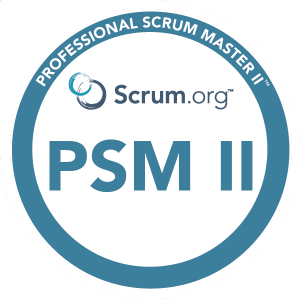As an agile evangelist, ensuring my teams continuously improve is a pinnacle component of sprint planning and executing. I always insist on having one story dedicated process and operational improvement each sprint to ensure we constantly evaluate and improve our methods and practices to achieve better results and outcomes. There are many ways to evaluate your current and desired states. One such method I will focus on in this article is the What, So What, Now What model, a simple yet powerful reflective framework that helps you analyze a situation, understand its implications, and plan for improvement.
What is the What, So What, Now What model?
The What, So What, Now What model was developed by Terry Borton in the 1970s as a way to facilitate learning from experience¹. It consists of three stages:
- What: This is where you describe what happened in an objective and factual way. You can use questions like “What happened?”, “Who was involved?”, “When and where did it happen?”, and “How did it happen?” to guide your description.
- So What: This is where you interpret what the situation means for you and others. You can use questions like “How did I feel about it?”, “What were the consequences or impacts?”, “What did I learn from it?”, and “What were the challenges or opportunities?” to guide your interpretation.
- Now What: This is where you identify what actions you can take to improve or change the situation. You can use questions like “What can I do differently next time?”, “What are my goals or objectives?”, “What are the steps or strategies to achieve them?”, and “How will I measure or evaluate my progress?” to guide your action planning.
You can use the model for:
- Solving problems and finding solutions
- Learning from successes and failures
- Developing new skills and competencies
- Enhancing creativity and innovation
- Improving communication and collaboration
- Increasing productivity and efficiency
- Boosting customer satisfaction and loyalty
- Achieving personal and professional goals
How does the What, So What, Now What model work?
The What, So What, Now What model works by following a cyclical process of reflection, analysis, and action. You can apply the model to any situation, event, or project that you want to improve or learn from. Here are the steps to follow:
- Identify a situation that you want to reflect on. It can be something that went well, something that went wrong, or something that you want to improve.
- Apply the What stage to describe the situation in detail. Write down the facts and avoid making assumptions or judgments.
- Apply the So What stage to interpret the situation and its implications. Write down your feelings, thoughts, and insights. Consider the positive and negative aspects of the situation and how they affect you and others.
- Apply the Now What stage to plan for improvement or change. Write down your goals, actions, and measures. Think about how you can apply what you learned to future situations or projects.
- Implement your action plan and monitor your progress. Review your results and evaluate your performance. Repeat the cycle as needed until you achieve your desired outcomes.
How can you use the What, So What, Now What model in continuous improvement?
You can use this versatile tool throughout your sprint rituals, after completing an individual story , as part of a sprint review to introspect, or even as part of your sprint retrospective upon receding feedback, criticism, or praise.
By using the What, So What, Now What model for continuous improvement, you can turn any situation into a learning opportunity and a catalyst for change. You can also develop a reflective mindset and a growth mindset that will help you adapt and thrive in any environment.
Conclusion
The What, So What, Now What model is a simple yet powerful reflective framework that helps you analyze a situation, understand its implications, and plan for improvement. It is a valuable tool for continuous improvement, as it helps you learn from your experiences and apply your learnings to future situations or projects. By using the model regularly and consistently, you can improve your processes, methods, and practices, and achieve better results and outcomes.
References
(1) What So What Now What (Reflective Model & Examples). https://www.thinkific.com/blog/what-so-what-now-what/.
(2) What Is Continuous Improvement? (With 13 Examples) – Indeed. https://www.indeed.com/career-advice/career-development/continuous-improvement-examples.
(3) 11 Examples of Continuous Improvement Companies | KaiNexus. https://blog.kainexus.com/continuous-improvement-companies.
(4) 10 Continuous Improvement Examples You Need to Know – SolveXia. https://www.solvexia.com/blog/5-continuous-improvement-examples-you-need-to-know.
(5) 16 Best Continuous Improvement Tools (with examples). https://teamhood.com/project-management/continuous-improvement-tools/.
Discover more from Doron Katz
Subscribe to get the latest posts sent to your email.




